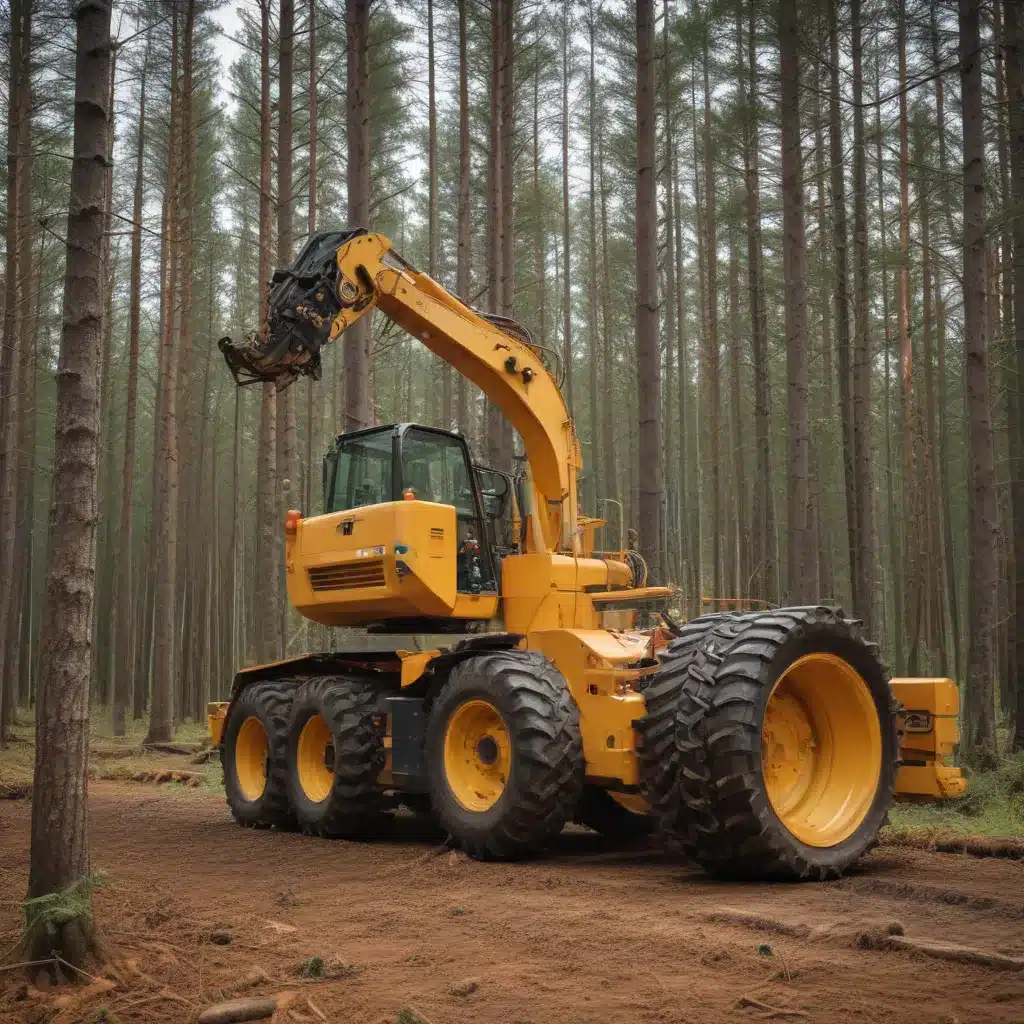The forestry and timber industry is on the cusp of a technological revolution. Across the entire value chain, from harvesting to processing, emerging automation and robotics solutions are transforming what was once a highly labour-intensive sector. This evolution towards greater mechanization and intelligence holds immense promise for enhancing productivity, improving worker safety, and driving more sustainable forestry practices.
Robotic Logging Equipment
At the forefront of this transformation are advanced robotic systems designed to tackle the most demanding tasks in timber harvesting. Autonomous feller bunchers, equipped with sophisticated computer vision and control systems, can navigate challenging terrain, identify target trees, and fell and process them with remarkable precision. These machines leverage cutting-edge sensors, including LiDAR and high-resolution cameras, to map the surrounding environment, detect obstacles, and optimize their movements.
Beyond just felling, robotic log forwarders and skidders are revolutionizing the transportation of harvested timber. Leveraging GPS, inertial measurement units, and path-planning algorithms, these autonomous vehicles can navigate the forest, locate and retrieve logs, and deliver them to roadside storage areas or processing facilities – all without human intervention.
Sensor-driven Optimization
Automation in the timber industry extends far beyond just the physical equipment. Sensor networks and data analytics are enabling a new level of optimization and precision in forestry operations. Advanced monitoring systems, leveraging a combination of aerial drones, ground-based sensors, and satellite imagery, provide real-time insights into forest conditions, tree health, and resource availability.
By integrating these data streams with machine learning and predictive analytics, forestry managers can make more informed decisions around harvest planning, silvicultural practices, and resource allocation. For example, predictive models can anticipate insect infestations or disease outbreaks, allowing proactive interventions to safeguard timber stands. Similarly, analytics-driven harvesting schedules can optimize the timing and location of logging activities to minimize environmental impact and maximize timber yields.
Robotics in Timber Harvesting
Automation in timber harvesting extends beyond just the mechanization of physical tasks. Innovative robotic systems are emerging that can handle highly specialized and intricate forestry operations.
One such example is the tree-swinging robot, nicknamed the “Stick Insect”, developed by Scion in collaboration with the University of Canterbury. Inspired by the graceful movements of spider monkeys and gibbons, this remotely controlled device can traverse steep, rugged terrain by “swinging” from tree to tree, without ever touching the ground. Equipped with sensors and custom-built tools, the Stick Insect can perform tasks like measuring tree diameters, pruning, and even selective felling – all while minimizing the environmental impact of human intervention.
Similarly, robotic lumber processing systems are transforming the post-harvest stages of the timber value chain. Advanced computer vision and robotic manipulators can accurately grade, sort, and process logs, optimizing the recovery of high-value timber products and minimizing waste. These systems can operate around the clock, ensuring a steady flow of processed materials to downstream industries.
Economic Implications
The adoption of automation and robotics in timber harvesting holds immense economic potential. Cost savings are a primary driver, with reductions in labour, fuel, and equipment maintenance expenses. Increased productivity and throughput can also boost the overall profitability of forestry operations.
However, the transition to automation is not without its challenges. The initial capital investment required for these advanced systems can be a significant barrier, particularly for smaller-scale operators. Additionally, the displacement of human labour raises social and economic concerns that might want to be addressed through workforce retraining and redeployment initiatives.
Environmental Considerations
Automation and robotics in timber harvesting also hold the promise of enhanced environmental stewardship. Precision-guided equipment, equipped with advanced sensors and control systems, can minimize the physical impact on forest ecosystems. By optimizing harvest plans, reducing waste, and enabling more sustainable forestry practices, these technologies can help forestry operations stay in harmony with the natural environment.
Furthermore, the data-driven insights enabled by sensor networks and analytics can inform better wildlife conservation strategies, help monitor the health of forest ecosystems, and support long-term sustainability in timber production.
Technological Advancements
The rapid progress in automation and robotics within the timber industry is underpinned by several key technological advancements. Sensor technologies, such as LiDAR, high-resolution cameras, and thermal imaging, provide the critical data inputs needed to navigate, map, and interact with the forest environment.
Equally important are the control systems and decision-making algorithms that power these autonomous and semi-autonomous machines. Machine learning and computer vision techniques enable equipment to perceive their surroundings, identify targets, and execute complex tasks with minimal human intervention. Predictive maintenance models, leveraging sensor data, further enhance the reliability and longevity of these robotic systems.
Challenges and Barriers
Despite the immense potential of automation and robotics in timber harvesting, there are still significant challenges and barriers to widespread adoption. The regulatory landscape surrounding the use of these technologies in forestry operations remains complex, with stringent safety standards and environmental regulations that might want to be navigated.
Additionally, the integration of these advanced systems into existing forestry infrastructure and workflows can be a complex and time-consuming process. Ensuring seamless data management and connectivity across the various components of the timber value chain is also a crucial, but often underestimated, challenge.
Conclusion
As the forestry and timber industry continues to evolve, the integration of automation and robotics will play a pivotal role in shaping the future of timber harvesting. From autonomous felling and log transportation to precision-guided processing and data-driven decision-making, these technological advancements hold the promise of enhancing productivity, improving worker safety, and driving more sustainable forestry practices.
While the path to widespread adoption may not be without its challenges, the forestry industry’s embrace of these transformative technologies will undoubtedly revolutionize the way we approach the stewardship and utilization of our vital timber resources. By leveraging the power of automation and robotics, the industry can pave the way for a more efficient, environmentally responsible, and resilient future in timber harvesting.
Tip: Inspect stand health regularly for signs of pest infestation or disease


